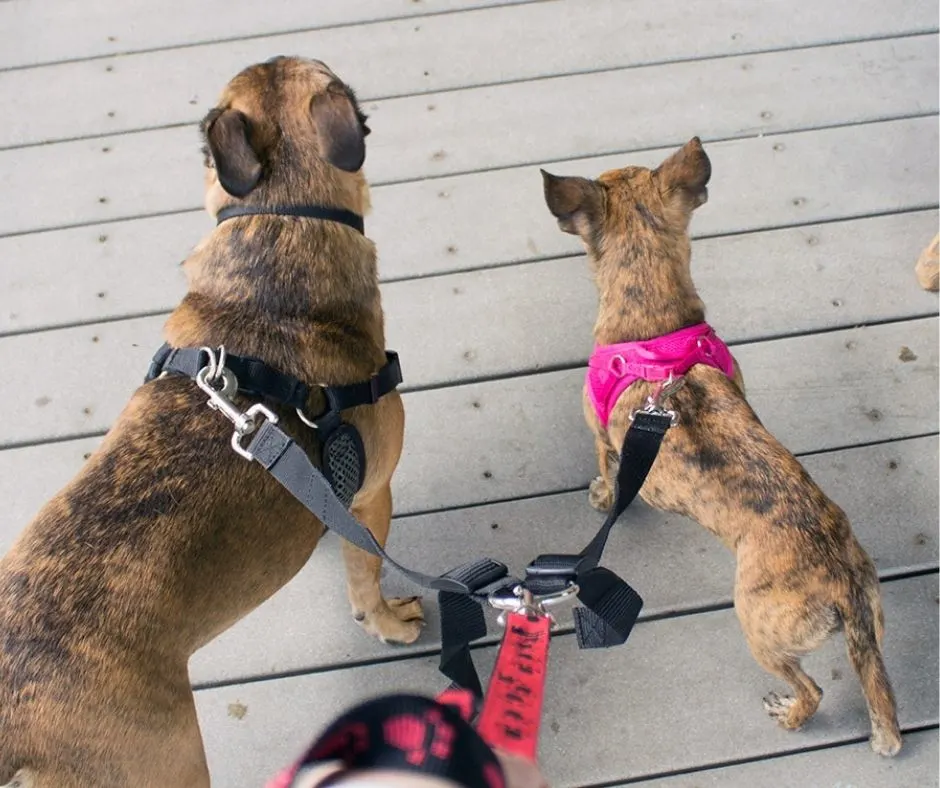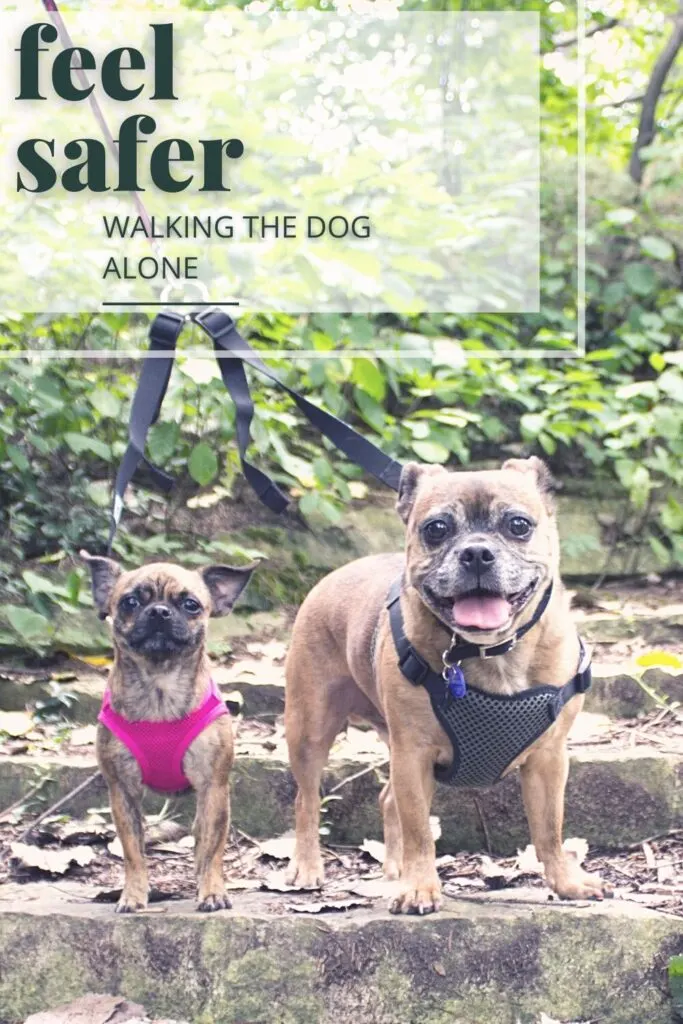Walking the dog alone is a great way to connect with your four-legged family member. Unfortunately, it’s also a great way to get inside your own head.
If you have any sort of tendency toward anxiety or a disorder like General Anxiety Disorder (GAD), it’s all too easy to get dragged down into the rabbit hole of your own overthinking, especially when it’s just you and your beloved pooch.
Why do people fear walking the dog alone? What if a wild animal attacks? What if he pulls too hard and chokes himself, or worse, slips the collar? What if it’s too hot or too cold? What if I get attacked? The list goes on and on.

While it may be unavoidable for some of us to completely avoid the black hole that is overthinking, we can at least control our descent into the void of anxiety-induced fear by using some of the tips below.
They’ll help those of you out there who have anxiety about walking the dog temper those feelings and enjoy your walks more.
Make Walking the Dog Better for You and Your Pooch
These tips make it easier for you to enjoy taking your dog out for a walk, and by extension, help him enjoy it more, too. After all, our dogs pick up on our vibe, so if we’re a snarled bundle of nerves, our dogs are not going to have a good time.
I know how fear can be, so I know that these tips may not cover each and every scenario that has played out in your head, but they’re a good start.
Use Dog Body Armor
No seriously, this is a thing. They now make what are known as “Coyote Vests” that you can put on your walking dog, and it really is body armor.
These vests are stab-resistant, have spikes on the sides and around the neck area, and some of them even have nylon bristles on the back designed to make your dog not look so tasty to a predator. They also help protect your dog from attacks from other dogs.
I saw this product on Shark Tank and immediately thought it was genius. Depending on the area you live in, the threat of predators differs. A spiky dog vest gives a bit of security knowing that your dog will not be easy to grab.
Carry Human Repellent
The anxiety doesn’t stop at wondering about what might happen to your dog while on a walk. You’ve probably also thought about what might happen to you. Bring along mace or pepper spray to help protect yourself against attacks from other humans.
Bring Animal Repellent
You can find pepper sprays made for use on animals, as well. Bring along some in case of an attack from an aggressive dog. Don’t worry, the spray won’t do any permanent damage to the attacking dog or to your dog if he gets caught in the spray. Burning eyes are far better than severe injury!
Use a Walking Harness
Walk your dog with a heavy-duty harness rather than or in addition to a collar. This eliminates the fear that your dog will pull too hard and choke or injure himself and take away the fear that he’ll slip the collar and run away or get hurt.
One of my dogs is terrified of the vet and squirmed his way right out of his collar in the parking lot. That was terrifying and insanely dangerous. Never again will I go anywhere with a dog in a collar alone.
It’s often quite easy for dogs to wiggle their way out of a collar. In my opinion, a harness is always a better and more secure choice for dog walking.
Note and update: I have now learned that my dog can wiggle out of a harness, as well. Yes, this was discovered during another vet visit. We are now testing a harness/training collar combo. Definitely test to see what works best for your dog’s safety!
Use a Double Leash
If you have two dogs, a leash splitter is a game-changer. No more tangling your two leashes together throughout the walk. The leash coupler still allows your dogs room to move, but gives you a lot more control over the duo.
Wear Light-Up Dog Collar
If your dog needs a nightly walk to do his business, get a light-up dog collar, so he’ll be more visible in the night.
Use Reflective Patches for You
For even more visibility while walking the dog, wear a vest with reflective patches on it so there’s no doubt that you and your dog are out for his nightly constitutional.
Consider the Temperature
Consider how hot or cold it is when walking your dog. Heavy-coated dogs like Huskies and Samoyeds shouldn’t go for extended walks on very hot days. Likewise, toy breeds and breeds like Greyhounds and Whippets that don’t have a lot of body fat shouldn’t go for long walks on cold days.
Avoid pavement when possible on hot days so it doesn’t burn your dog’s paws, and bring along water on warmer days.
Use Doggie Boots
Speaking of temperature, you can find doggie boots out there that protect your dog’s paws from heat and cold. They’re a great way to protect his feet and alleviate your fear. IF you can get him to wear them.
Prepare a Dog Walking Bag
Bring along a bag full of supplies for your dog walk. Include items like a first-aid kit for minor cuts or abrasions, the water I mentioned earlier, treats, and other essentials.
Find Safe Dog Walking Areas
Google “dog walks near me” to find local areas that are good for walking your dog. Chances are, people in your community are already talking about this. You might be able to find popular trails that are known to be safe or a dog park with a great reputation.
Practice Training
One of the biggest dog walking tips to help you feel safer is training. YouTube has tons of videos on leash training and dog training that can help you teach your dog.
If your dog is extra energetic or you’re just not that confident in the do-it-yourself approach, you can also find dog training classes in your area or hire a professional.
Hire a Dog Walker
If your anxiety is based more on fears of your own safety, consider hiring a dog walker. Dog walkers are professionals. They walk dogs for a living, so you can feel good about them taking your pooch out for a walk. Ask around to find a good and reputable dog walker near you.

Ease the Stress of Walking the Dog Alone
There are so many avenues of stress and worry that you can get bound up in on any given subject, but walking the dog alone is a perfect storm of worry for both your safety and the safety of your dog.
The tips above can help you decrease the stress and worry associated with walking the dog alone. While this is most definitely not a one-size-fits-all list, it is an excellent foundation that covers a lot of different bases.
Give these tips a try, and hopefully, you’ll be feeling a little less stressed on your walks with your pup.






